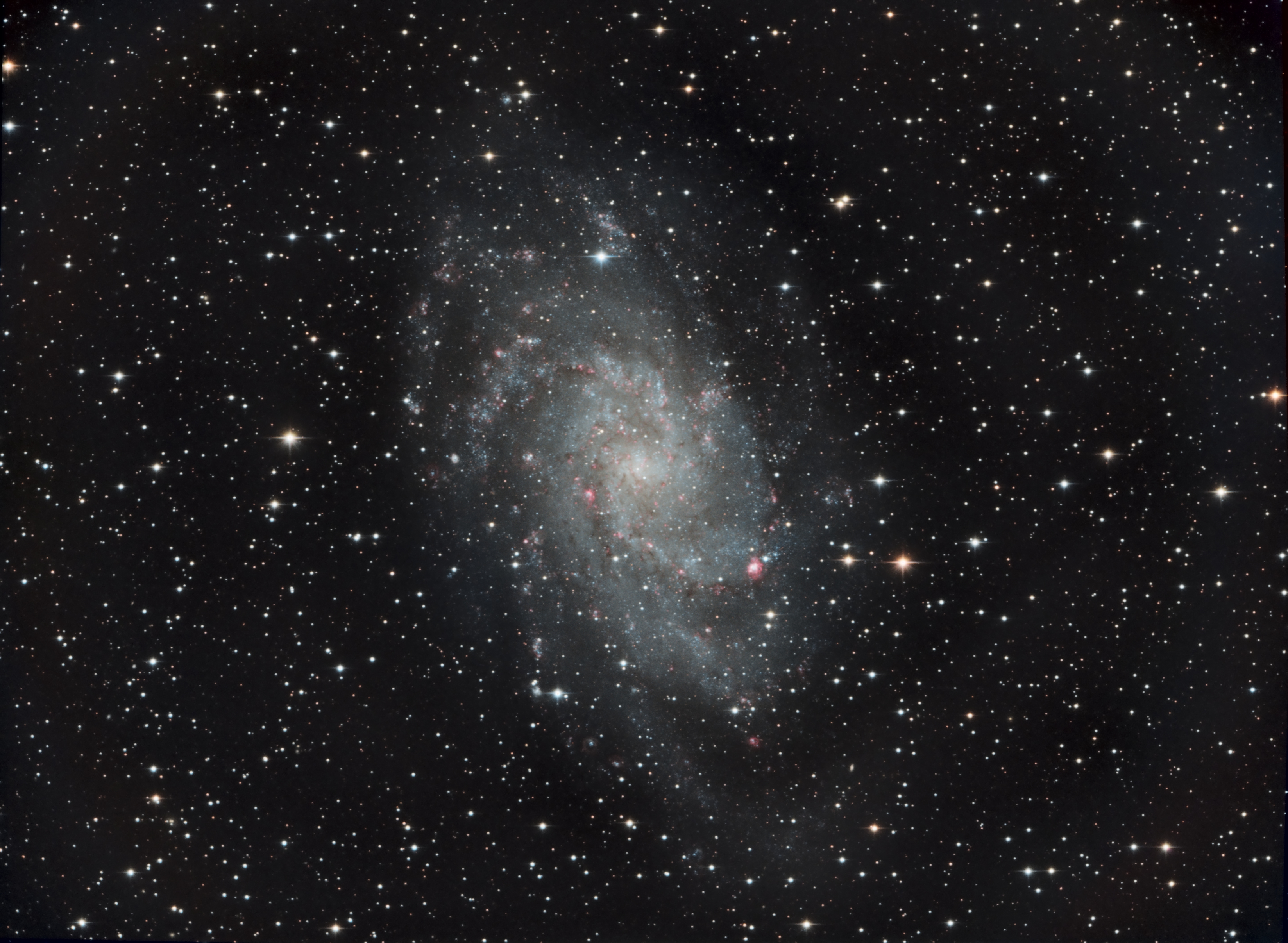

Image of the Triangulum Galaxy (M33) obtained by Rod Michael (member of Black Hills Astronomical Society) in Rapid City, SD:
General Information About The Triangulum Galaxy
The Triangulum Galaxy is a spiral galaxy approximately 2.7 million light-years (ly) from Earth in the constellation Triangulum. It is catalogued as Messier 33 or NGC 598. The Triangulum Galaxy is the third-largest member of the Local Group of galaxies, approximately half the size of our Milky-Way. In the “local group,” the Andromeda Galaxy is the largest galaxy member. The Triangulum Galaxy is one of the most distant permanent objects that can be viewed with the naked eye. The galaxy is the smallest spiral galaxy in the Local Group and it is believed to be a satellite of the Andromeda Galaxy due to their interactions, velocities and proximity to one another in the night sky.
The galaxy gets its name from the constellation Triangulum, which is where it can be spotted. The Triangulum Galaxy is sometimes informally referred to as the "Pinwheel Galaxy" by some amateur astronomy references and in some public outreach websites.
Under exceptionally good viewing conditions with no light pollution, the Triangulum Galaxy can be seen with the naked eye. It is one of the most distant permanent objects that can be viewed without the aid of a telescope. Being a diffuse object, its visibility is strongly affected by small amounts of light pollution. It ranges from easily visible by direct vision in dark skies to a difficult averted vision object in rural or suburban skies.
To Find M33, you will need clear, dark skies. Although nominally visible to the naked eye, it is actually near transparent and can be difficult to see with binoculars or even a telescope. In South Dakota, look in autumn skies for the constellation Andromeda (extending from Northeast to Southwest) and its bright central star, Mirach, in the Northern sky, almost directly overhead. The Triangulum Galaxy is approximately equidistant Southeast of Mirach as the Andromeda Galaxy is Northwest of Mirach. See diagram below (taken from the EarthSky website). Find the Andromeda Galaxy first. Doing so will inform you approximately how far from Mirach to look for the Triangulum Galaxy.

Image Technical Information.
My image of M33 is a composite image and includes 105 six-minute exposures obtained between the 24th of October and the 15th of November using a Luminance (clear) filter and Red, Green, and Blue color filters. Subframes have been “stacked” color-by-color and processed using Pleiades PixInsight software to produce a final image. This image is intended to be a true color image.
Total Number of Exposures (Sub-Frames): 105
Total Exposure Time: 10.5 hours
· Unfiltered Light (Luminance): 18 x 6 minutes (1.8 hours);
· Red Filter: 29 x 6minutes (2.9 hours);
· Green Filter: 29 x 6minutes (2.9 hours); and
· Blue Filter: 29 x 6minutes (2.9 hours)
Equipment:
· Telescope: Celestron RASA Astrograph, 11″
· Camera: QSI683WS with 5-position Internal Filter Wheel
· Filters: Astrodon E2 LRGB and Astrodon Ha 5nm
· Telescope Mount: Software Bisque Paramount MX+
· Telescope Guiding: Software Bisque “The SkyX Professional Edition” with TPoint Supermodel, ProTrack, and Periodic Error Correction (all software)
· Photo Processing: Pre- and Post-Processing with Pleiades PixInsight, v1.8.5